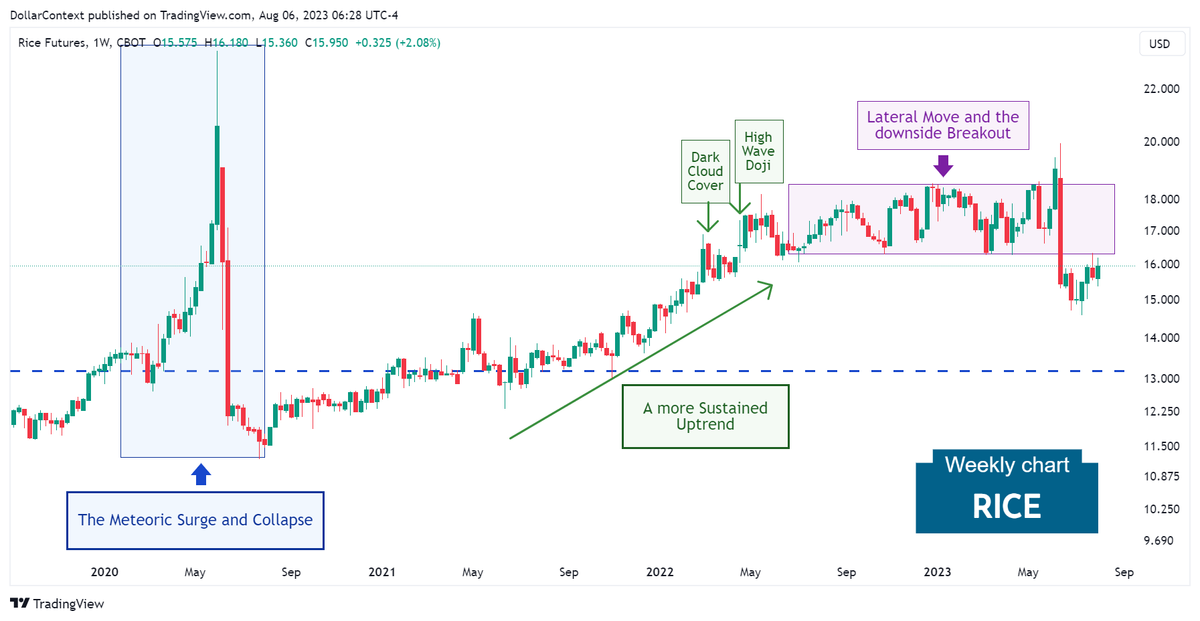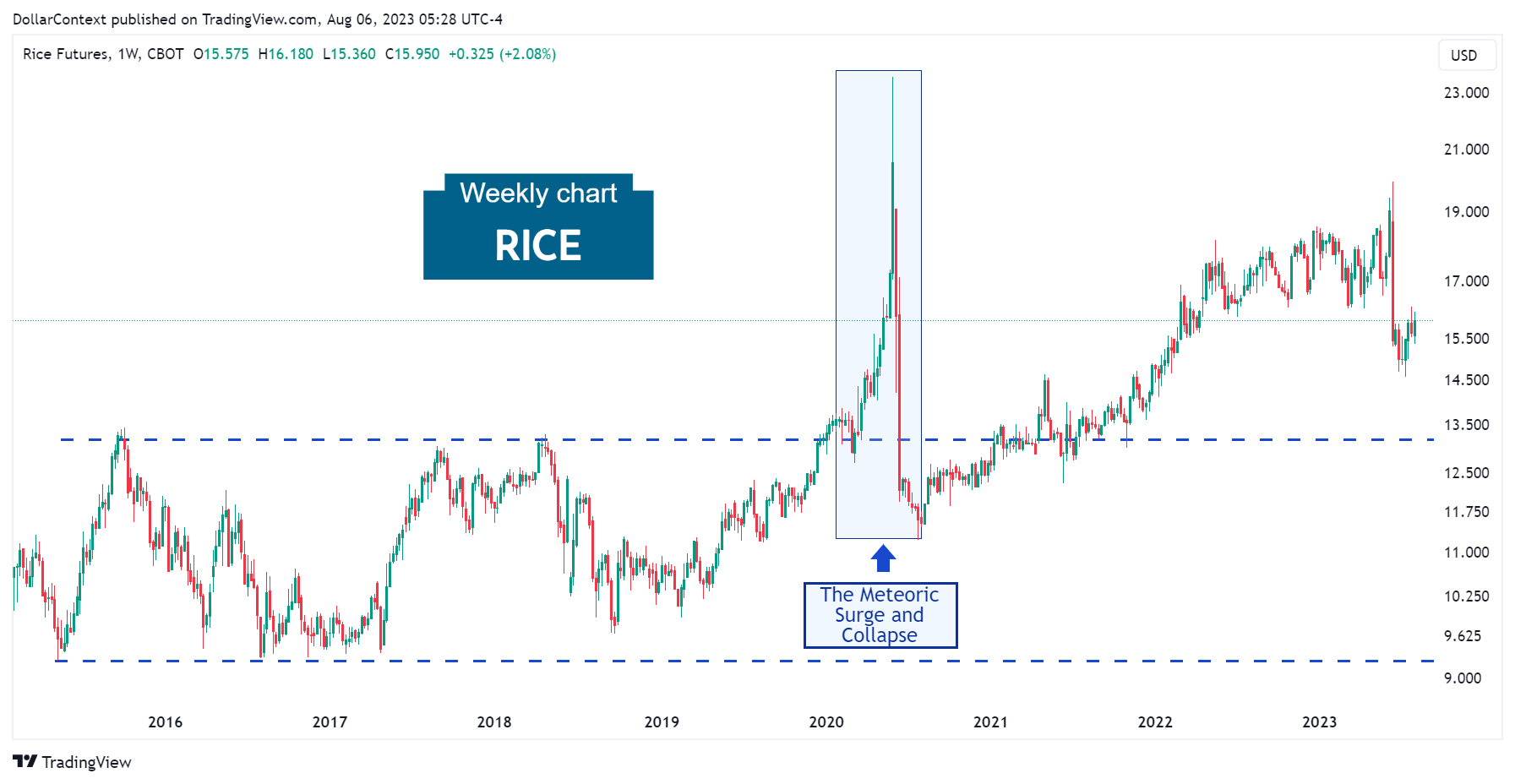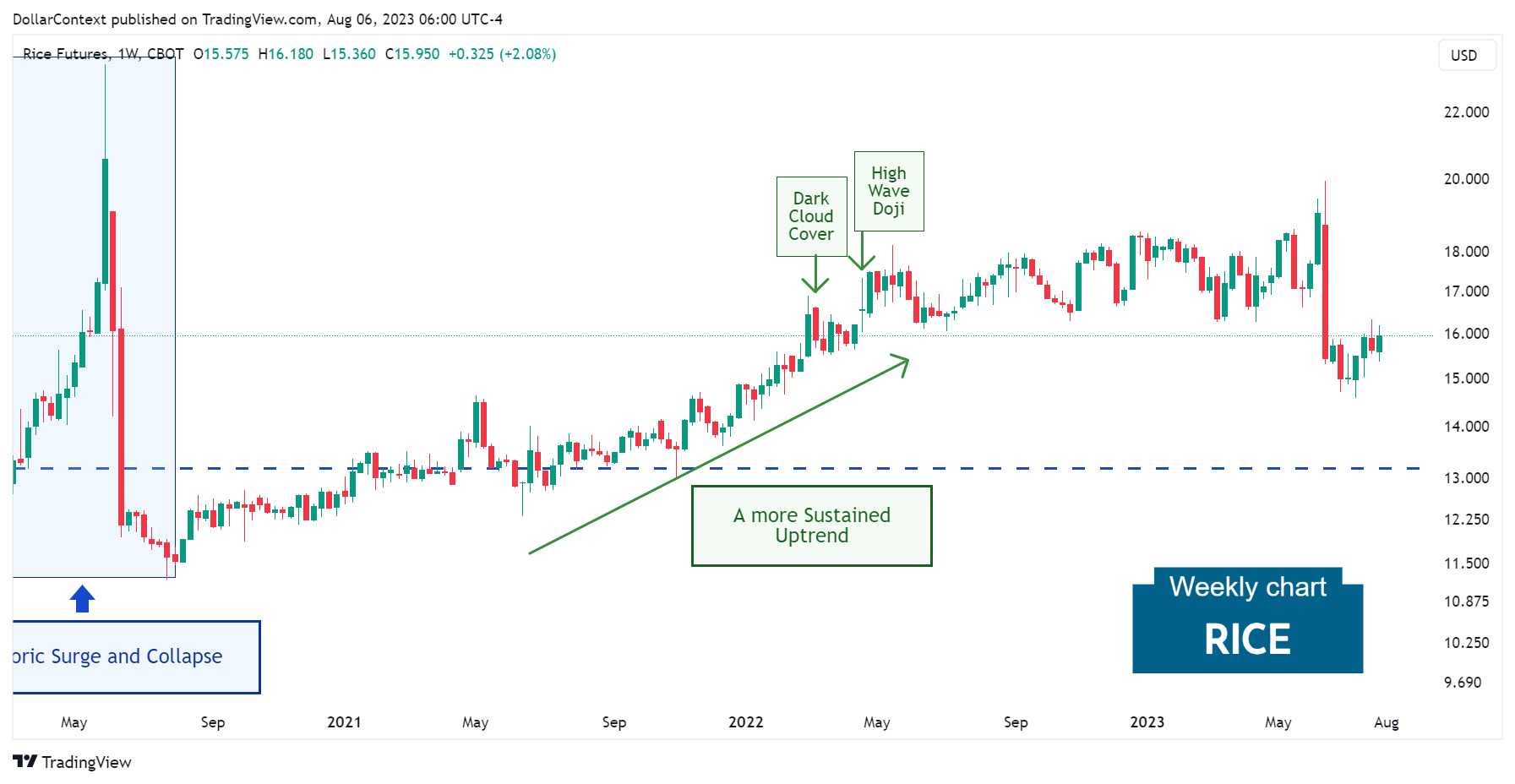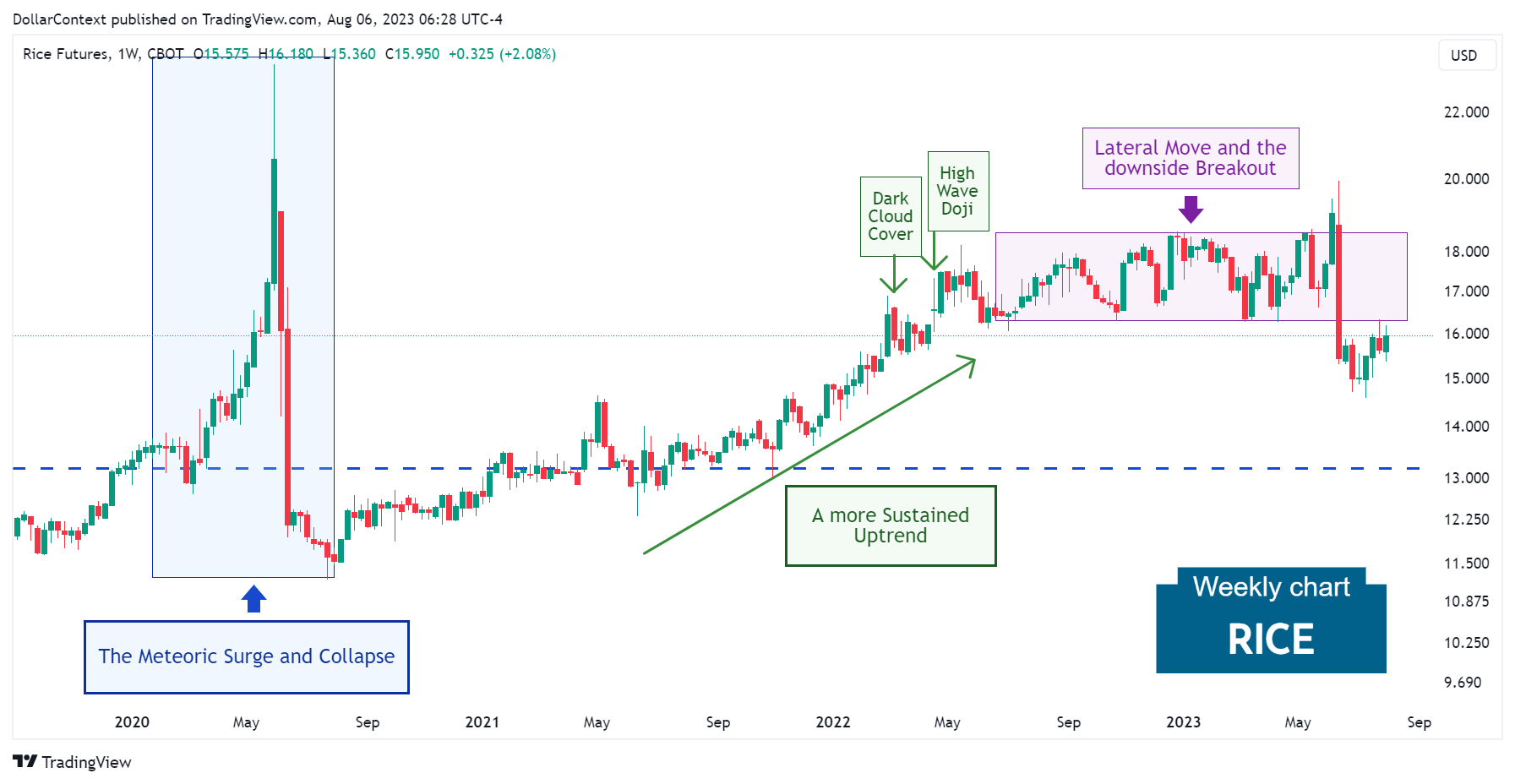Rice Prices: Evolution and Outlook
We discuss the patterns that have shaped the course of rice prices since 2020 and provide our perspectives regarding the future of this market.

This analysis reflects market conditions and information available at the time of publication (August 2023). It is provided for educational and historical context.
In this post, we'll explore the forces and changes that have influenced the course of rice prices from 2020 onward. To wrap things up, we'll share our insights on the potential future developments in this market.
1. January 2020–July 2020: A Meteoric Surge and a Rapid Collapse
In the first months of 2020, the rice market skyrocketed when most commodities declined. Rice prices basically doubled in the futures market during this phase. However, in just a couple of weeks, the market collapsed. A number of factors might have contributed to this extreme volatility:
- Steps to Curb Exports: Major export players such as India, Vietnam, Cambodia, and Myanmar curtailed their export activities to assess their resilience during the pandemic and safeguard their domestic supply. In fact, Vietnam, Cambodia, and Myanmar went as far as implementing a temporary ban on exports.
- COVID-19 Pandemic: This unprecedented health crisis led to a global economic slowdown as lockdown measures and restrictions were implemented. In addition, the pandemic triggered disruptions in supply chains, instigating further volatility and unpredictability.
- Strengthening of the Dollar: The rush towards more secure assets and the surge in the dollar's value exerted downward pressure on global commodity prices, including rice prices.
Technically, the breakout from a previous extended sideways range, which began in 2015, seems to have been the catalyst for the sharp upward spike in price.

2. August 2020–April 2022: A More Sustained Recovery
From August 2020 to May 2022, the rice market displayed a more "constructive" upward move. It's worth noting that the price momentum slowed down after forming a dark cloud cover pattern, followed by a high wave candle six trading sessions later.

3. From May 2022 Onward: The Lateral Range and the Downside Breakthrough
After the dark cloud cover and high-wave doji mentioned above, the rice market entered a prolonged phase of lateral movement until June 2023, when a shift to the downside occurs.

4. Outlook for late 2023 and 2024
The following perspective reflects expectations based on information and policy signals available at the time of writing.
In our opinion, two key elements are expected to shape the course of rice prices in 2023 and 2024:
- Supercycle Assumption: Starting in 2020, the commodity market may have initiated a supercycle period. A commodity supercycle usually spans more than eight years and precipitates substantial price surges in global commodity assets. If this assumption is correct, it suggests that the rice market might have staged a false breakout of the lateral range established in 2022 and 2023, with the prospect of returning to an upward trend in the future.
- Recession Hypothesis: The aggressive cycle of interest rate increases enacted by the Federal Reserve, combined with the scrutiny of critical leading indicators like the yield curve and PMI, suggests a significant probability of an impending economic downturn potentially unfolding somewhere in 2024. Typically, a period of economic downturn has a negative impact on commodity prices.
We'd like to emphasize that these two scenarios are not mutually exclusive. A correction prompted by an economic recession can either succeed or precede a major upswing in commodity prices within the framework of a commodity supercycle.





